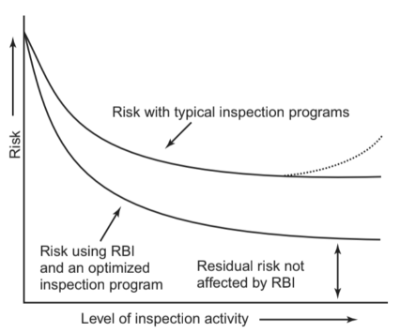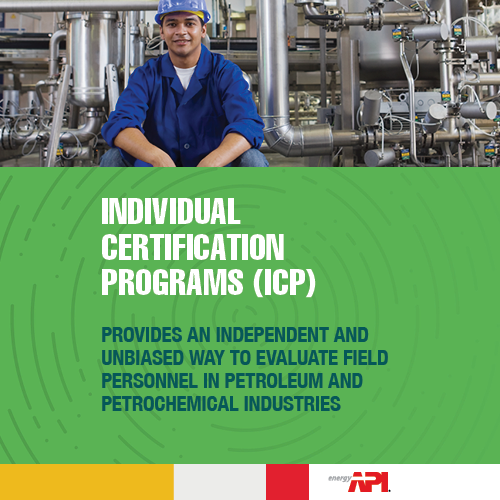Foundational Concepts
Risk
Risk is inevitable and everyone lives with it every day. While it’s impossible to remove all risks, it is possible to eliminate some while mitigating others. It’s important to prioritize these risks and concentrate one’s attention and resources on the risks that present the highest potential loss or consequence. Calculating risk can be achieved by multiplying the likelihood (probability) of an event occurring during a time period with the consequences associated with that event. Mathematically, this can be expressed using the following equation:
Risk = Probability × Consequence
The type of risk that this equation identifies for RBI is referred to as relative risk, which API RP 580 defines as “[t]he comparative risk of a facility, process unit, system, equipment item, or component to other facilities, process units, systems, equipment items, or components, respectively.” This differs from absolute risk, which is “[a]n ideal and accurate description and quantification of risk.” In essence, it’s understood that a number of factors can affect risk and that calculating absolute risk would be very time-consuming, costly, and often cannot be done with a high degree of accuracy. Due to this, RBI is focused on a systematic determination of relative risk.
Risk Analysis
The work practices of any RBI program must be consistent and give reproducible results. Through the process of RBI, team members collect data, review data, validate data, identify the risk(s), analyze the risk(s), and develop a detailed inspection plan depending on the condition of the unit and acceptable risk levels. As such, a risk analysis (expressed in the equation below) is performed by determining the Probability of Failure (PoF) and the Consequence of Failure (COF).
Risk = Probability of Failure (PoF) × Consequence of Failure (CoF)
Data from the PoF and CoF analyses can be collected using a qualitative or quantitative methodology. The primary focus of implementing RBI is to maintain mechanical integrity of pressure equipment or components of a pressurized system and to mitigate risk due to loss of containment of a product to the external environment.
Inspection Optimization
It’s important to have adequate information for planning, optimizing, and implementing an RBI program. To do this, it is necessary to determine the risk associated with equipment items and estimate or quantify the relative effectiveness of different inspection techniques and process monitoring
The figure below shows the reduction in risk that can be expected as the degree and frequency of inspections are increased. The upper curve represents a facility’s typical inspection program. If no inspection activity exists, the level of risk will be higher. As the inspection activities increase, the level of risk decreases. However, a point is reached where additional inspection activity begins to show a diminishing return in additional risk reduction. The dotted line exists to show that when excessive inspection is applied, the level of risk may increase due to invasive inspections potentially causing additional deterioration.

An RBI program provides a consistent methodology for assessing the most favorable combination of inspection methods and frequencies. Each available method can be analyzed and its relative effectiveness in reducing the PoF can be estimated. Given this information and the cost of each available method, an inspection optimization program can be developed. The lower curve in the above figure demonstrates how the application of an effective RBI program can lower risk with the same level of inspection activity. Through an effective RBI program, inspection activities are focused on the higher risk items instead of the items with lower risk.
Since RBI is focused on a systematic determination of relative risk, it’s impossible for the lower curve in the above figure to reach zero due to a multitude of residual risks (i.e., human error, natural disasters, design errors, unknown or unanticipated damage mechanisms, etc.).
















